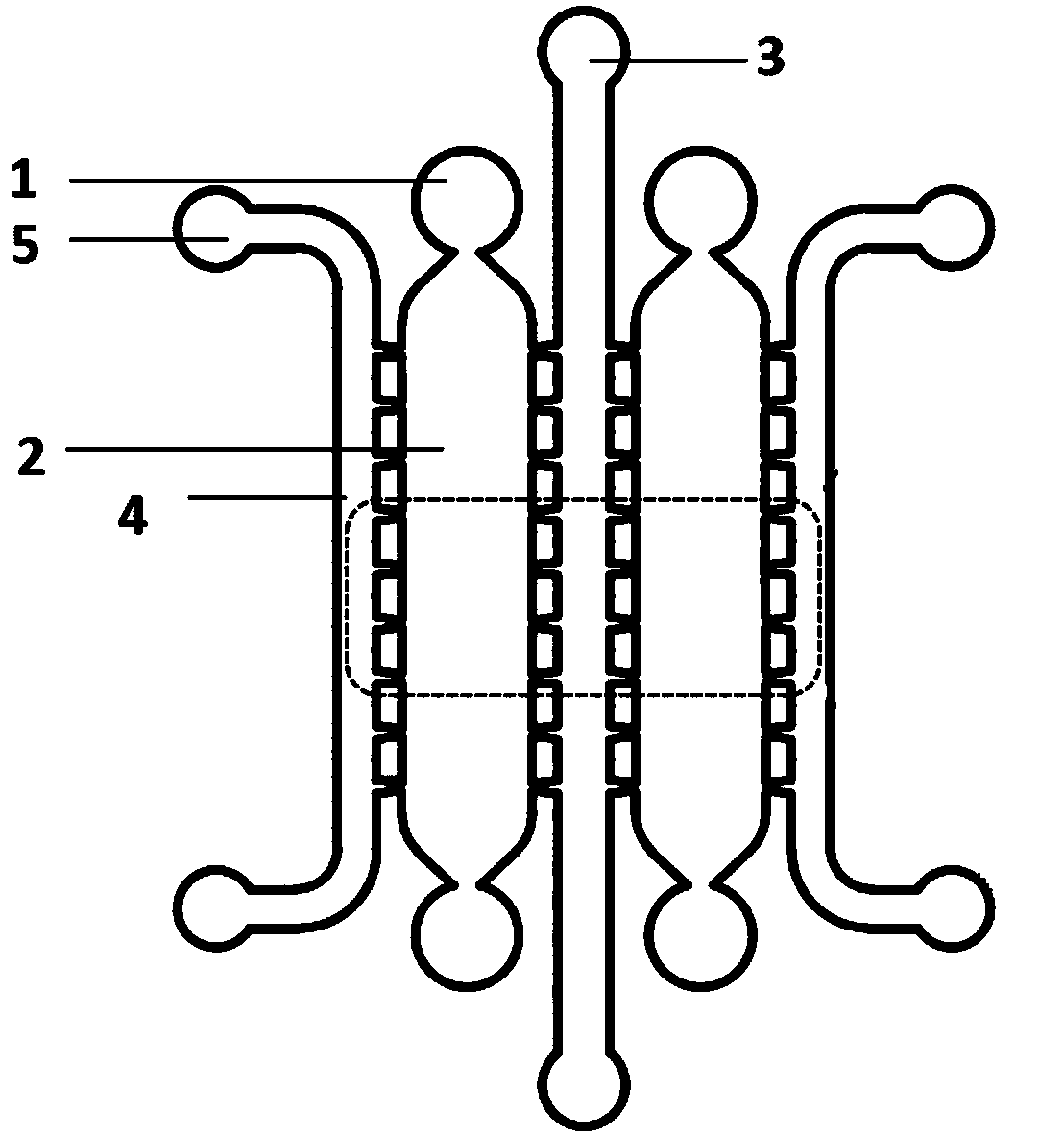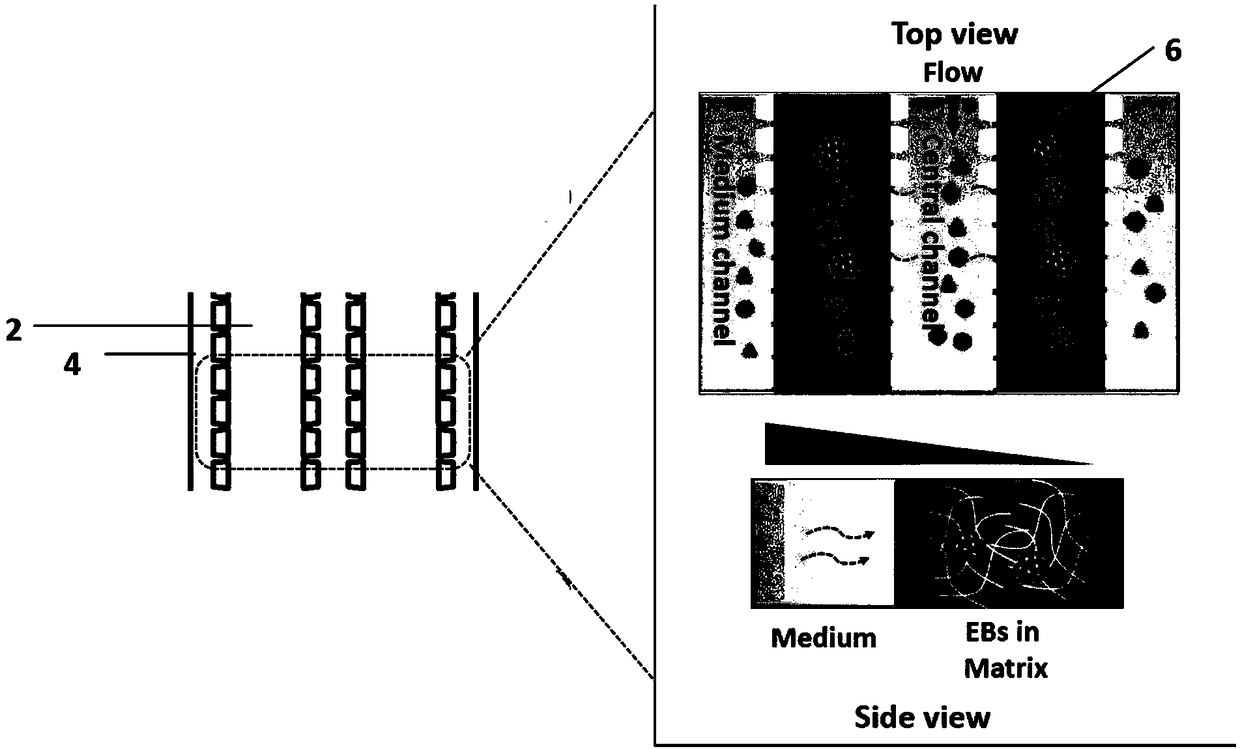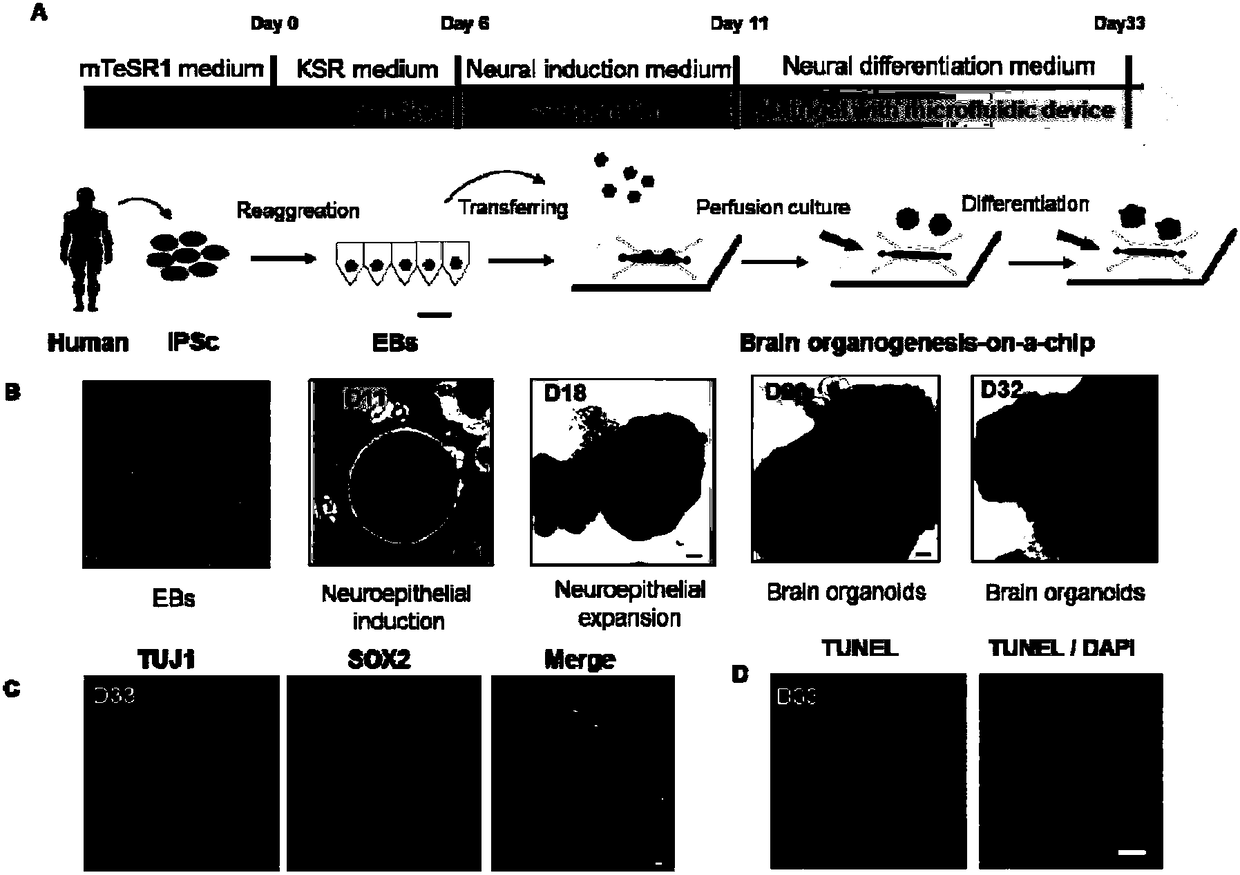Method for building three-dimensional analog brain development models on basis of micro-fluidic chips
A technology of microfluidic chips and construction methods, applied in biochemical equipment and methods, specific-purpose bioreactors/fermenters, tissue cell/virus culture devices, etc.
- Summary
- Abstract
- Description
- Claims
- Application Information
AI Technical Summary
Problems solved by technology
Method used
Image
Examples
Embodiment 1
[0042] Development of HiPSC-derived brain-like cells on a microfluidic chip
[0043] The steps are mainly divided into three parts: the preparation of the microfluidic chip, the formation of embryoid body EBs and the development of the brain in the microfluidic chip.
[0044] Step (1) The preparation of the microfluidic chip, specifically: the microfluidic chip is formed by irreversible sealing of the upper and lower layers, and the materials of the upper and lower layers are polymerized polydimethylsiloxane, a transparent and breathable biocompatible material. things. Then the upper and lower layers of polymer materials are treated with oxygen plasma for 60 seconds for irreversible sealing. After sealing, it is sterilized by high temperature and high pressure for standby use.
[0045] Microfluidic chips such as figure 1 As shown, it includes an extracellular matrix suspension inlet (1), a three-dimensional channel (2), a two-dimensional perfusion channel (3), a two-dimensi...
Embodiment 2
[0050] Expression of associated proteins in different brain regions during development.
[0051] The static and perfusion cultured brains grown on the microfluidic chip for 33 days were taken for cryosection respectively. The method was as follows: 4% paraformaldehyde was used to fix the cells for 20 minutes, washed with PBS buffer three times, each time for 10 minutes; 30% sucrose Dehydrate overnight at 4°C; embedding in OCT, store at room temperature for 30 minutes, and solidify at 80°C; freeze sections with a thickness of 10-20 μm, and attach them to electrostatically adsorbed glass slides. Immunofluorescence staining was then carried out. The method was as follows: soak the slides with sections in PBS buffer for 5 minutes; act with 0.1% triton X-100 porogen for 10 minutes, rinse once with PBS buffer for 5 minutes; goat blocking serum React at room temperature for 1 hour; primary antibodies (PAX6, PAX2, NESTIN, TUJ1, SOX2) were diluted 1:400, incubated overnight at 4°C, and...
Embodiment 3
[0053] Expression of neuron-associated proteins in different cortical layers during development.
[0054] The static and perfusion cultured brains grown on the microfluidic chip for 33 days were taken for cryosection respectively. The method was as follows: 4% paraformaldehyde was used to fix the cells for 20 minutes, washed with PBS buffer three times, each time for 10 minutes; 30% sucrose Dehydrate overnight at 4°C; embedding in OCT, store at room temperature for 30 minutes, and solidify at 80°C; freeze sections with a thickness of 10-20 μm, and attach them to electrostatically adsorbed glass slides. Immunofluorescence staining was then carried out. The method was as follows: soak the slides with sections in PBS buffer for 5 minutes; act with 0.1% triton X-100 porogen for 10 minutes, rinse once with PBS buffer for 5 minutes; goat blocking serum Effect at room temperature for 1 hour; primary antibody (TBR1, CTIP2, BRN2) was diluted 1:400, incubated overnight at 4°C, washed 3 ...
PUM
| Property | Measurement | Unit |
|---|---|---|
| Diameter | aaaaa | aaaaa |
| Depth | aaaaa | aaaaa |
Abstract
Description
Claims
Application Information
 Login to View More
Login to View More - R&D
- Intellectual Property
- Life Sciences
- Materials
- Tech Scout
- Unparalleled Data Quality
- Higher Quality Content
- 60% Fewer Hallucinations
Browse by: Latest US Patents, China's latest patents, Technical Efficacy Thesaurus, Application Domain, Technology Topic, Popular Technical Reports.
© 2025 PatSnap. All rights reserved.Legal|Privacy policy|Modern Slavery Act Transparency Statement|Sitemap|About US| Contact US: help@patsnap.com



